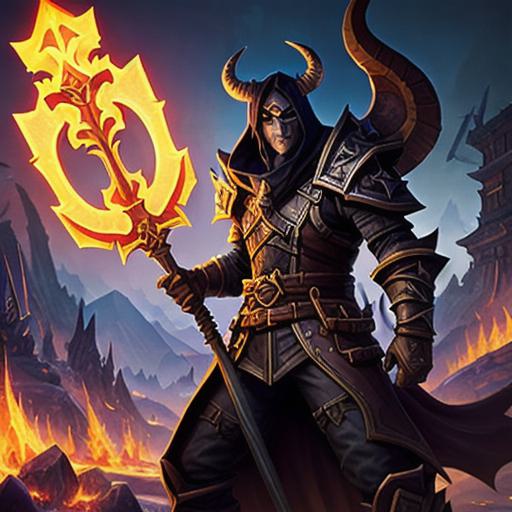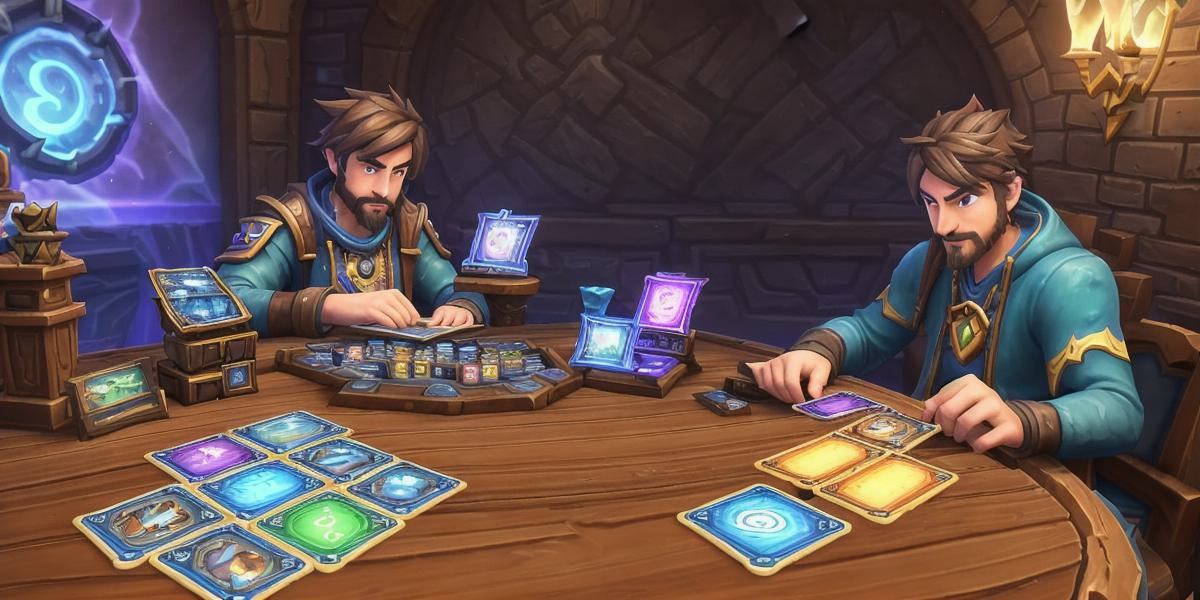Answer:
In the ever-evolving world of Hearthstone, staying updated on the current meta is essential for competitive play. Here we’ll discuss several popular decks that have proven themselves in recent times.
1.1. Demon Hunter
The newly introduced Demon Hunter class, with its versatile arsenal and aggressive gameplay style, has quickly risen through the ranks. Decklists featuring Evolve synergy and powerful demons like Tickeye Torchlight and Vibra-Slasher have been dominating the ladder scene.
1.2. Even Shaman
Even Shaman is a long-standing favorite among players, thanks to its ability to swarm the board with minions quickly. The current Even Shaman build revolves around buffing minions and overwhelming opponents with a massive board presence. Key cards include Bloodlust, Stormrage Totem, and Maelstrom Portal.
1.3. Highlander Mage
Highlander Mages are known for their ability to run single copies of powerful cards in their decks, creating unpredictable gameplay. This build focuses on quick card drawing with spells like Preparation and Thottr-Two. Late-game finishers like Al’Akir the Windlord, Kangor’s Endless Rage, and The Lich King ensure a strong final push.
1.4. Quest Rogue
Quest Rogue has been a staple in Hearthstone for quite some time now. This deck revolves around completing quests to unlock powerful abilities that can quickly turn the tide of the game. With various potential finishers like Caverned Colossus, Earthen Ring Farseer, and Gnomish Inventor, Quest Rogue remains a formidable choice for players.
The meta in Hearthstone is always changing, so keep an eye on popular decks and adapt your strategy accordingly. Happy gaming!
Query 2: How does the Hearthstone meta evolve?
Answer:
Hearthstone’s meta (metagame) is a dynamic entity that constantly shifts and adapts as players explore new strategies, discover emerging interactions between cards, and Blizzard introduces new expansions. Let’s discuss some key factors driving these changes in the Hearthstone meta.
2.1. New Card Releases
With each expansion, new cards enter the game, introducing fresh possibilities for deck building and strategies. As players experiment with these additions, imbalanced combinations may emerge, causing shifts in the meta. For example, the release of the Demon Hunter class brought a wave of aggressive decks to the ladder scene.

2.2. Player Adaptation
As players discover new decks or strategies, they begin to adapt by creating counter-strategies or refining their existing decks to remain competitive. This results in an ongoing cycle of innovation and adaptation within the Hearthstone community. For instance, when Even Shaman became popular, players started using control decks like Control Warrior and OTK (One-Turn Kill) mages to counter it.
2.3. Community Feedback and Balance Changes
Blizzard listens closely to community feedback regarding the meta and makes balance changes as needed. These adjustments can significantly impact the competitive landscape, as we saw with the recent nerfs to several Demon Hunter cards to keep them in check.
In conclusion, the Hearthstone meta evolves through a combination of new card releases, player adaptation, and developer intervention. This ever-changing environment keeps the game fresh and exciting for players, encouraging continuous exploration and improvement.
